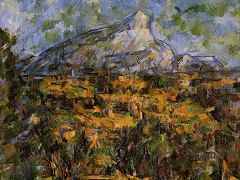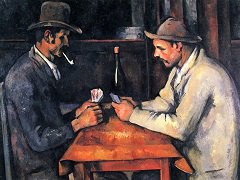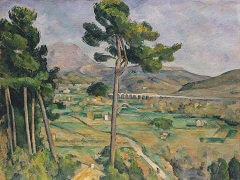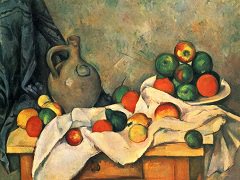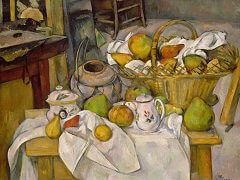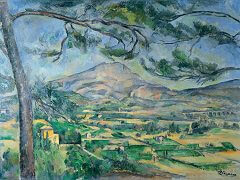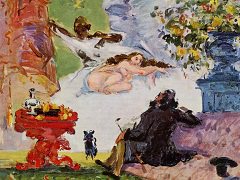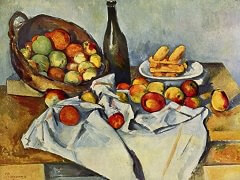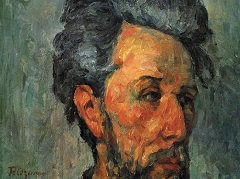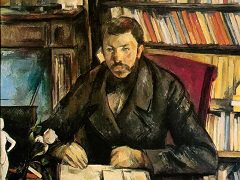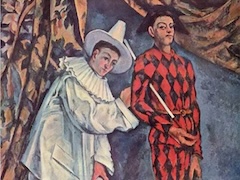Road at Chantilly, 1888 by Paul Cezanne
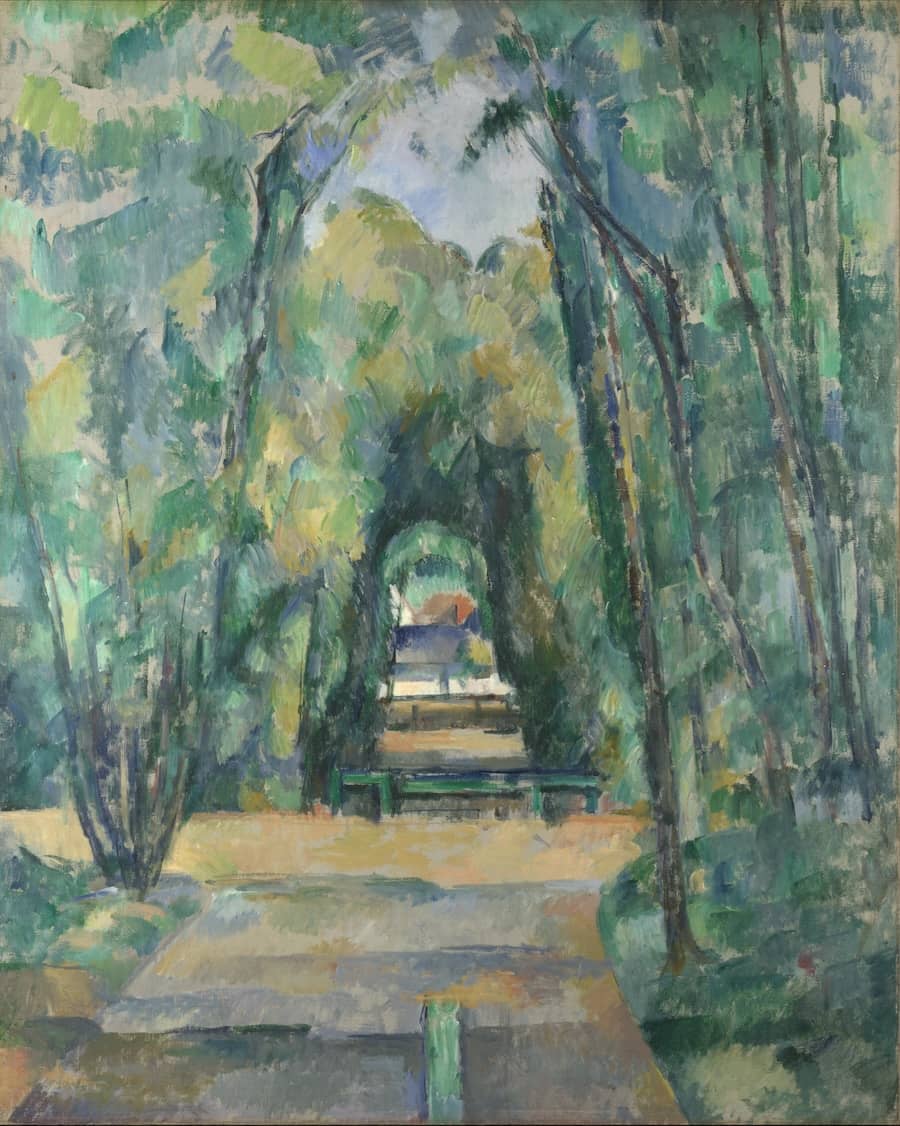
In Road at Chantilly, 1888, a modest, unlikely theme: a narrow, closed path flanked by trees, at the end of which we glimpse irregular segments of buildings, the whole seen in the most obvious way - the road in the middle, the opening, too.
We have observed before the significance of the barrier for Cezanne's vision of landscape. He concentrates, looks attentively, but does not cross. It is an object isolated at random for the eye; the symmetry does not belong to the scene as a whole, but to the conditions of seeing; the frame is like the eye itself, the path is the axis of vision; what is sighted on this path and within this frame is incomplete - it is not the object as we know it to be; yet Cezanne disengages an order from it, establishes connections between the parts and finally unites it to his frame. He isolates a pair of windows, joined by a roof line; together, they correspond to the barrier in the road. The sloping gables are like the inclined trees which frame the narrow view. The frame of vegetation forms an arched structure with supporting posts of interestingly contrasted shape, and the distant, enclosed segment of buildings is a shuffled quasi-Cubist succession of overlapping planes of warm and cold color, which we discover again in a loose play in the varied masses of the trees.
Cezanne's object is a piece of the visual world that combines in a striking way equivalents of the subjective and objective in his own seeing. The object of vision is closed off, the space near the spectator is open to him; the path of the eye is very marked, the path of the body is obstructed or absent. But the object and the spectator's space cohere in a rigorous way, through both the shapes and the colors. The object is accepted as directly given; it is in the center of the eye's field. In this picture it is perhaps reduced in size. If you sight the buildings through one eye, the depth is very marked.
What counts in the end is Cezanne's color sense and the life of his brush - vigorous, expressive, sure, and always in motion. We enjoy a beautiful play of greens beside the yellows, violets, and blues. The spots of green seem shapeless, in contrast to the geometrical lines of the buildings; yet they possess their own free harmony of form.


